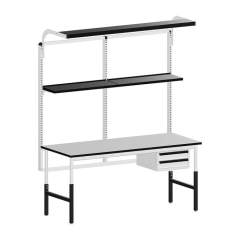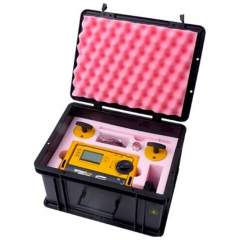High-Performance Soldering Stations by JBC
High-Performance Soldering Stations by JBC
Blog Article
Enhancing Industrial Efficiency with Bosch Rexroth Systems
Soldering is in the middle of contemporary electronics, joining the tiniest parts on advanced signal boards. As products reduce and their complexity rises, the demand for accuracy, effectiveness, and trusted options in soldering has never been soldering station (lötstation) higher. This is wherever sophisticated soldering practices and methods step in, transforming the landscape of technology assembly.

Advanced Soldering Strategies
Soldering is really a technique applied to join two items of metal together by melting a filler material, named solder, between them. Typically, this is done employing a hot iron and personally using the molten solder.
However, with the raising demand for precision and performance in electronics assembly, new sophisticated types of soldering have emerged. These practices offer improved get a grip on, reliability, and repeatability, creating them important in modern technology manufacturing.
Area Support Technology (SMT)
Area install engineering (SMT) requires connecting digital parts immediately onto the surface of a printed world table (PCB).
Shifting the Soldering Landscape
Throughout the last decade, miniaturization in electronic devices has increased by very nearly 65%, moving suppliers to undertake smarter approaches. Parts like microprocessors and multi-layer boards need identify reliability that conventional soldering just can't guarantee. That's why skilled professionals are moving towards sophisticated temperature-controlled soldering programs and smart soldering tools.
New market studies show a 40% upsurge in opportunities toward intelligent soldering alternatives between 2019 and 2023. Driving factors range from the demand for high-performance technology, particularly in the medical, automotive, and aerospace sectors.
The Rise of Temperature Detail
One critical trend could be the usage of soldering solutions that provide real-time heat control. Knowledge factors to a 35% decrease in disappointment rates when working with temperature-regulated soldering irons compared to their old-fashioned counterparts. These resources instantly calibrate and keep temperature levels, preventing solder cool joints or overheating sensitive components.
Experts report that adapting to these programs reduces rework time by almost 25%, more focusing the economic and creation benefits.
Better Tools for Greater Perform
Yet another trend could be the shift towards ergonomic, user-friendly soldering stations. Surveys among technology professionals suggest that 72% prefer methods with fast-heating tips, electronic features, and programmable profiles. This shift is not no more than efficiency; ergonomic style significantly reduces office accidents and fatigue, primary to better productivity.
Complex electric careers today frequently require accuracy at the micron level. Advanced soldering pens with programmable feedback and micro-tweezers have quickly become essential. Statistical reviews from large assembly firms display up to and including 50% boost in first-pass yields following integrating these sophisticated tools.
The Rising Affect of Data in Soldering

Industry data display a fivefold escalation in the usage of data-enabled soldering stations over the past five years. By recording temperature, suggestion living, and also owner actions, these clever programs offer actionable insights. Quality control teams power these details to tighten procedures, dramatically reducing the flaw charge across creation lines.
Seeking Forward in Complicated Technology Assembly
The electronics industry's competition towards better, smaller, and more complex patterns will only intensify requirements on soldering. Trending statistics clearly highlight how modern, sensible soldering solutions are now actually a basis for supreme quality electronics.
For engineers, staying forward means knowledge and adopting these next-generation methods and workflows. The information is apparent: those that spend money on better soldering options may lead the way in efficiency, reliability, and effective manufacturing for the next wave of complicated digital devices. Report this page